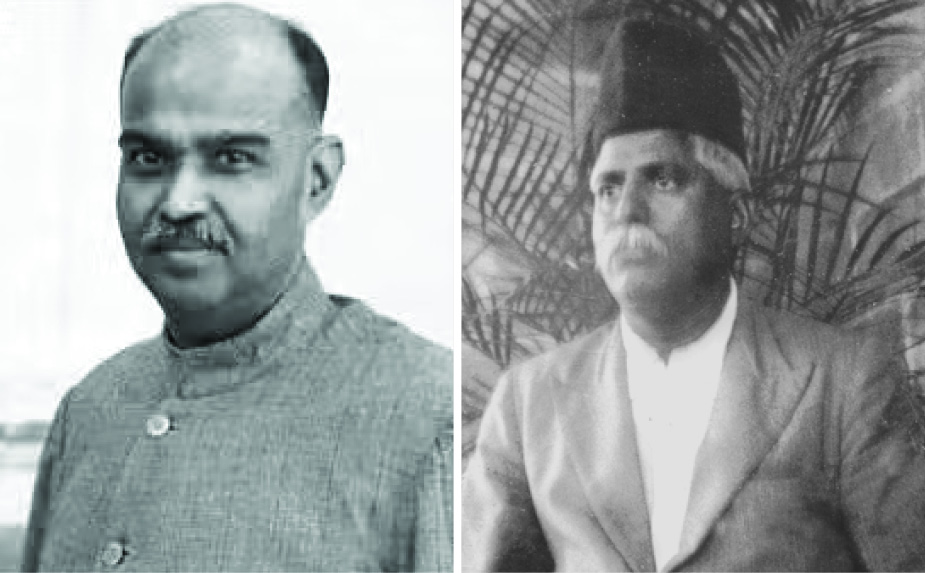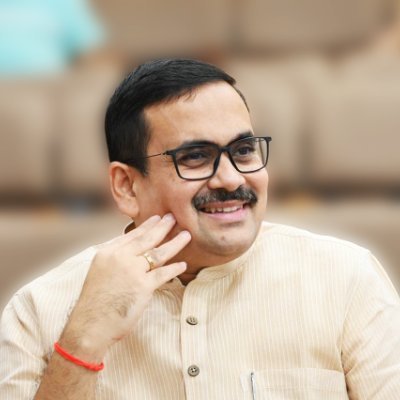The historic meeting among Hedgewar, Golwalkar, and Syama Prasad Mookerjee in the summer of 1940 coincided with the expansion of RSS and paved the way for India’s unity amidst calls of division
It was in the summer of 1940 that Sri Guruji and Dr Syama Prasad Mookerjee first met. On May 16, 1940, Dr Mookerjee left Calcutta for Bombay to attend the Hindu Mahasabha’s working committee meeting to be held in Dadar between May 18 and 19. The Hindustan Standard reported that Dr Mookerjee, then member of the Working Committee of the All-India Hindu Mahasabha had ‘left for Bombay on Thursday (16.5.1940) evening to attend the meeting of the Committee to be held at Dadar on May 18 and 19.’ It also reported that ‘Dr Mookerjee will stop for a day at Nagpur on his way back from Bombay.’ Intimation was received in Nagpur, that Dr Mookerjee would be coming ‘on May 20 to meet Doctorji.’
1940 was a significant year for the RSS. It was significant in terms of the Sangh’s growth and spread. By that year shakhas had started spreading ‘throughout the length and breadth of the country’ and in the ‘Officers Training Camp’ (OTC) in Nagpur, there was representation from across the country. The editor of an informative and succinct biography of Dr Hedgewar, ‘Dr Hedgewar: the Epoch Maker’, records that ‘over 1400 Swayamsevaks took part’ in the OTC and ‘out of them 600 were from the Frontier Provinces, Punjab, Uttar Pradesh, Bihar, Bengal, Madras, Karnataka, Maharashtra and Gujarat.’
In his authoritative biography of Dr Hedgewar, Rakesh Sinha, for instance, writes of the RSS’s rapid expansion during that early phase, and how it was ‘beginning to spread gradually in other provinces as well.’ Sinha writes that ‘1,500 Swayamsevaks attended the 1935 winter camp held at Nagpur’ and ‘by 1936, there were 200 shakhas of the Sangh throughout the country with 25,000 Swayamsevaks. Come 1938 this figure touched 350 with 40,000 volunteers. This rose to 500 and 60,000 Swayamsevaks respectively by 1939 and at the beginning of 1940, the number of shakhas increased by a further 200, with an addition of a further 20,000 Swayamsevaks to the RSS fraternity. While the number of shakhas remained constant at the beginning of 1941, the number of Swayamsevaks had now reached 150,000.’
The RSS’s footprint and presence had begun percolating across India. Its message was being absorbed and accepted across regions and social diversities. It was a difficult year and yet the Sangh grew at a steady and measured pace. There were continuous reports coming in of its ‘unceasing growth.’
In a letter to Golwalkar, Dr Hedgewar wrote of how in ‘the rapidly changing circumstances, our activities are also growing in full steam. It is clear from this that our organizational growth does not depend on any particular programme. Such indeed is the great potential of our ideal and our method of work. Our mission is bound to succeed despite any odds.’ Succeed it did, over the decades, despite concerted attempts to suppress and decimate it. The 1940 summer OTC in Nagpur, thus, was the result of a farseeing plan drawn up by Doctorji. During this phase, he would often be heard asking Swayamsevaks as to how many of them would be ‘needed for achieving the freedom of the country?’ This often-made query indicated the direction of his thinking. In a letter, Dr Hedgewar articulated his plan which ‘could make the Sangh most effective.’ In the course of the next three years, Dr Hedgewar proposed, of making ‘at least three percent of the population of cities and one per cent in villages’ Swayamsevaks ‘equipped with full uniform.’
Anticipating and keenly following national developments, while being treated at Rajgir between February and mid-April 1940, for his illness, Doctorji, hardly took rest. He saw the Muslim League harden its stance and adopt devious and well-strategised methods to push through its demand for a separate Islamic homeland. He insisted on redoubling the effort to spread the Sangh’s work, ‘Expand, grow faster, faster and faster still,’ was his message to Swayamsevaks in those crucial days. Many often heard him mutter, ‘O, look there! The year 1940 is already passing! And yet we have achieved nothing; we continue to be a subject nation. But someday we shall attain freedom.’ While Jinnah schemed to break India, Dr Hedgewar, the unalloyed patriot, then working on a different dimension and in his last days, was exercised with the thought of India’s freedom.
While the year saw an expansion of the Sangh’s work, 1940 was also a challenging year for the Sangh. By May 1940, Dr Hedgewar, the Sangh’s soul and founding essence, had fallen seriously ill. Ceaseless organizational work and travel, exertion for the mission he had undertaken, and an increasingly indifferent health had finally taken its toll. Though he insisted on staying at the Nagpur OTC camp, Doctorji could not participate in its sessions. The Nagpur OTC was ‘the last RSS programme of Dr Hedgewar’s life. It was, writes Rakesh Sinha, ‘truly reflective of the Sangh’s all-India character.’ Describing its concluding programme, the popular English weekly Mahratta wrote that ‘there was an unanticipated crowd to witness the closing ceremony of the OTC. There were many important personalities from Nagpur and other parts of the country. Sangh leaders from other provinces were also present.’
Within fifteen years of its founding, the RSS had undoubtedly and surely started emerging as an all India movement. It was in these circumstances that the meeting between Doctorji and Syama Prasad took place with Sri Guruji also present. Within a month of this historic and significant meeting, Dr Hedgewar died at the age of 51. All through his suffering, his iron-will and focus shone forth undiminished. His message in his last address to Swayamsevaks, was on the need to ‘organise the entire Hindu society from Kanyakumari to the Himalayas.’ The Sangh, he exhorted, ‘should not be the preserve of only the Swayamsevaks, but must cover the entire Hindu people outside the Sangh fold. Our object should be to show to the people the true path of national salvation’ and that path was that of organisation – the only path to salvation for Hindu society lay in organizing itself and in unity, and the Sangh, he said, ‘will strive on to accelerate the pace’ of being organized and united. ‘As we continue our efforts,’ he foretold, ‘a golden moment will arrive when the entire Bharat will stand as one undivided and indivisible entity. No power on earth will then cast its malicious eyes on Hindusthan. We have not set out to assault anybody. But we must always be vigilant and resist any outsiders’ efforts to assault us.’ It was an unequivocal message for unity and a full-throated call for organized action against the forces that were bent on creating disruptions and division.
1940 was also a politically loaded year for India. In March that year, while Doctorji convalesced and worked in Rajgir, the infamous Lahore Resolution was passed by the Muslim League led by M.A. Jinnah, demanding Pakistan. The meeting between Dr Hedgewar, Golwalkar and Dr Syama Prasad Mookerjee in Nagpur thus in May 1940, took place against the backdrop of these momentous developments.
Source:
https://www.millenniumpost.in/opinion/onward-to-nagpur-to-meet-doctorji-591819
(The views expressed are the author's own and do not necessarily reflect the position of the organisation)


